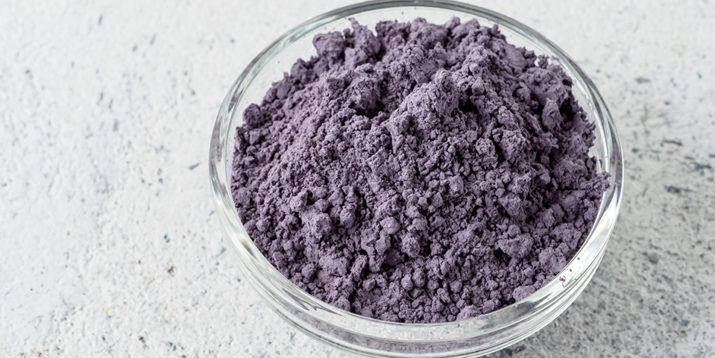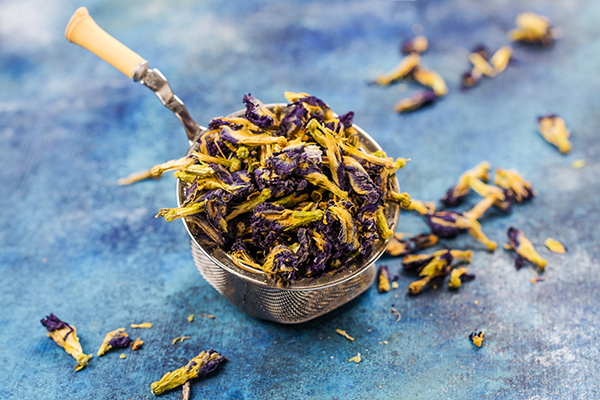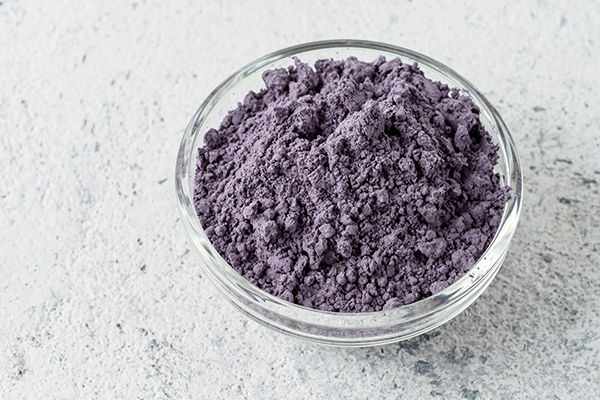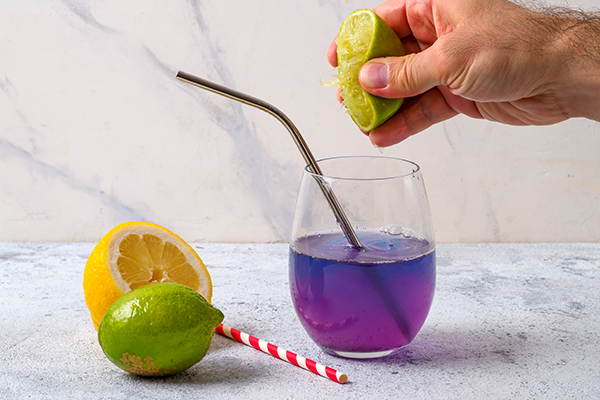Butterfly Pea Flower Tea: (Almost) Too Pretty to Drink

The next time you’re aiming to cool off, try an icy glass of purple-blue butterfly pea flower tea.
If you’re not familiar with this IG-ready type of tea, you’re about to be educated — get your tastebuds and camera phone ready!
View this post on Instagram
What Is Butterfly Pea Flower Tea?
Blue pea flower tea is a mesmerizingly beautiful drink brewed from dried flowers of the butterfly pea plant (clitoria ternatea), originating from Southeast Asia.
Most teas are black, green, amber, or clear in color, but butterfly pea flower tea starts out striking, dark cobalt blue.
But what does butterfly pea tea taste like?
This tea tastes woody and earthy with a light fragrant smell — after all, you are drinking flowers!
The butterfly pea plant is also a multi-tasker — different cultures have used it as a popular, natural dye for centuries.

What Is Butterfly Pea Flower Tea Good For?
It’s good for making a memorable impression, of course. Besides blueberries, rarely will you see any food so blue in nature.
No wonder the beverage has been taking social media by storm!
You can drink the tea as is or use it in colorful cocktails, lemonades, and boba drinks.
Despite its trendiness, you won’t easily find butterfly pea flowers in the grocery store.
If you want to try it, look to the Internet for dried butterfly pea flowers, powders, or liquid extracts.
3 Butterfly Pea Flower Tea Benefits

Health benefits for butterfly pea flower tea are relatively scant, and you likely won’t drink enough to make a difference.
And if you’re concerned about the electric-blue color, don’t be alarmed.
According to Brittany Crump, M.P.H., R.D.N. at Savor Nutrition, “Butterfly pea tea is safe to consume, and most people do so without any significant side effects.”
1. Butterfly Pea Flower Tea Contains Antioxidant-Like Compounds
Butterfly pea flower contains anthocyanins.
“Anthocyanins are a type of antioxidant-like compound responsible for giving many purple, blue, and red fruits and veggies their vibrant color. They can help you stay healthy,” says Crump.
Antioxidant-like compounds can protect you from free radicals, which are unstable molecules that can vreact with your cells leading to damage.
Other foods containing anthocyanins are blueberries, blackberries, purple cabbage, and red wine.
In general, an antioxidant-rich diet is linked to good health. If you score anthocyanins from a cup of tea, more power to you!
2. Butterfly Pea Flower Tea Is Caffeine-Free
Butterfly pea tea is a herbal tea and considered caffeine-free. That’s great news if you’re sensitive to caffeine.
It’s especially great news if you like to enjoy a cup of hot tea before bed.

3. Butterfly Pea Flower Tea Changes Color
The sorcery of butterfly pea tea doesn’t end there: Add a splash of lemon or lime to the liquid brew, and it will change from deep blue to pretty magenta-purple right before your eyes!
That’s because the anthocyanins in butterfly pea flowers react to changes in pH. Acidic ingredients (e.g., lemon, lime) lowers the pH causing the blue to morph into purple.
In theory, basic ingredients can make blue butterfly pea tea green, but it’s not commonly practiced.
How to Make Butterfly Pea Flower Tea
You don’t really need a recipe for tea. Simply drop dried butterfly pea tea flowers into boiling water and let them steep for three to five minutes.
We recommend a ratio of 1 cup water to 1 tablespoon of dried flowers. Then, strain out the flowers and enjoy your tea!
